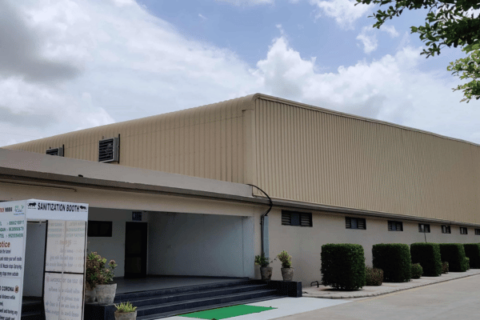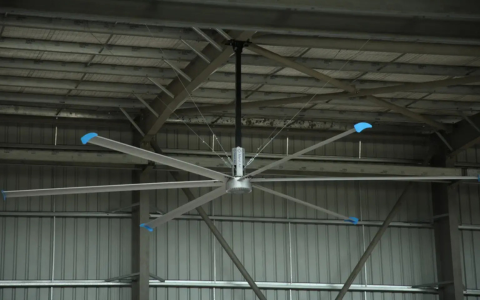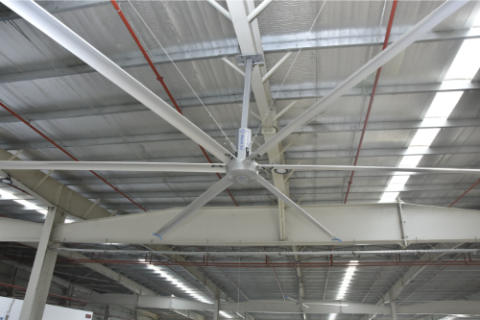Exhaust fans have an important role. Mostly when it comes to keeping up with the quality of air in home offices and other spaces. Opting for the right exhaust fan requires one to know about the different materials used in the making of it.
It can have an impact on the performance. As well as the longevity of the fan.
Why Exhaust Fans Matter in Ventilation Systems
Exhaust fans are important in mechanical ventilation systems because they enhance indoor air quality, prevent damage due to moisture, remove odors and control temperature. As they pull stale air out of a building or space and expel it outside where the fan discharges, it creates a negative pressure with respect to the outside, thus allowing fresh air to enter the space and ventilation system, allowing continuous exchange of the air in the space producing a healthier and more comfortable indoor environment.
Benefits of Exhaust Fans
- Improved Indoor Air Quality
- Moisture Control
- Odor Reduction
- Temperature Regulation
- Structural Protection
- Compliance and Safety
- Cost-Effective Ventilation
Why are exhaust fans relevant?
- Industrial exhaust fans have quite a role in removing stale and stagnant air.
- These help control the moisture present in the surrounding area.
- Industrial exhaust fans also help remove unpleasant smells from a place.
- These contribute to an improvement in air quality and impact overall productivity.
Plastic Exhaust fans
- These are extensively light and quite easy to install.
- It reduces the strain that might be exerted on a surface.
- These fans are also less labour-intensive.
- Plastic fans tend to be resistant to corrosion and issues of rusting.
- These are quite well suitable for areas that might have high humidity.
- Plastic as a material absorbs a lot of vibration. Hence, it contributes to lower noise levels in an industrial area.
- The materials in use are also quite cost-effective and tend to be popularly sought after when seeking in-budget options.
- Available in a range of sizes, shapes as well as colours. These allow it to be effectively integrated into a modern interior, contributing to the overall look of a space.
Metal exhaust fans
- These primarily tend to be quite strong and durable.
- With the capability to survive harsher conditions, these find extensive usage, specifically in high temperatures.
- They offer powerful performance and are quite effective in different industrial settings.
- The metal industrial exhaust fans are resistant to degrading over time and can be subjected to high temperatures.
- They are quite cost-effective and suited for prolonged use.
- These can easily be recycled.
- With proper care, metal industrial exhaust fans are quite favourable and quieter.
Plastic vs. Metal Exhaust Fans – Head-to-Head Comparison
Here are some key differences between plastic and metal exhaust fans:
| Feature / Aspect | Plastic Exhaust Fans | Metal Exhaust Fans |
| Weight & Installation | Lightweight, easy to handle and install | Heavy, harder to install, may strain mounting surfaces |
| Corrosion Resistance | Excellent in humid environments | Prone to rust/corrosion in humid or chemically aggressive areas |
| Durability & Strength | Less durable, can warp in heat or become brittle in cold | Very durable, withstands harsh use and high temperatures |
| Airflow Performance | Lower airflow, less powerful | Stronger, more stable airflow, ideal for larger spaces |
| Heat Resistance | Sensitive to heat, can warp or degrade with grease | High heat resistance, performs well in kitchens |
| Noise & Vibration | Quieter, better vibration dampening | Louder due to vibration, can produce more noise |
| Cost | Generally more affordable | Typically more expensive |
| Design & Appearance | More design flexibility, blends with interiors | Solid, professional, industrial look |
| Best Applications | Bathrooms, humid areas, budget friendly installations | Kitchens, workshops, large spaces, heavy-duty use |
| Safety | May have sharp edges during installation | Sturdy but heavy, requires strong support |
Factors to Consider When Choosing Between Plastic & Metal
When deciding between plastic and metal exhaust fans consider the cost, durability, noise level, ease of installation and resistance to corrosion. Plastic fans are typically less expensive, lighter, quieter and more corrosion resistant and can be effectively used in humid environments. Ease of installation will be a plus. Metal fans are typically deemed to be more durable, especially when applied in high-speed, high air volume environments, as well as environments with temperature loads of heat or cold.
Choose a Plastic Exhaust Fan If You Prioritize:
- Lower Cost
- Easy Installation
- Corrosion Resistance
- Quieter Operation
Choose a Metal Exhaust Fan If You Prioritize:
- Durability and Longevity
- High Airflow Capacity
- Extreme Temperatures
- Industrial or Demanding Applications
Key Considerations for Both:
- Noise Level
- Airflow Capacity (CFM)
- Fan Placement
Conclusion
If you are on the lookout for quality industrial exhaust fans. Explore the extensive range put out by Marut Air. They are redefining the standards of product quality when it comes to all sorts of ventilation solutions, visit Marut Air for more information.
People Also Ask About Plastic vs. Metal Exhaust Fans
Question 1. Are metal exhaust fans noisier than plastic ones?
Answer. Yes, metal exhaust fans are noisier than plastic exhaust fans because metal absorbs vibrations less effectively.
Question 2. Which type of exhaust fan is more energy-efficient?
Answer. Neither plastic nor metal exhaust fans are more energy-efficient because the efficiency depends on the design of the fan, motor and overall build quality, not just the material.
Question 3. Which fan lasts longer in high temperature areas?
Answer. Metal exhaust fans are generally more durable and last longer in high temperature areas as compared to plastic exhaust fans.
Question 4. What are the maintenance requirements for metal exhaust fans?
Answer. Routine maintenance is required for metal exhaust fans to ensure efficient operation and prevent fire risks.





